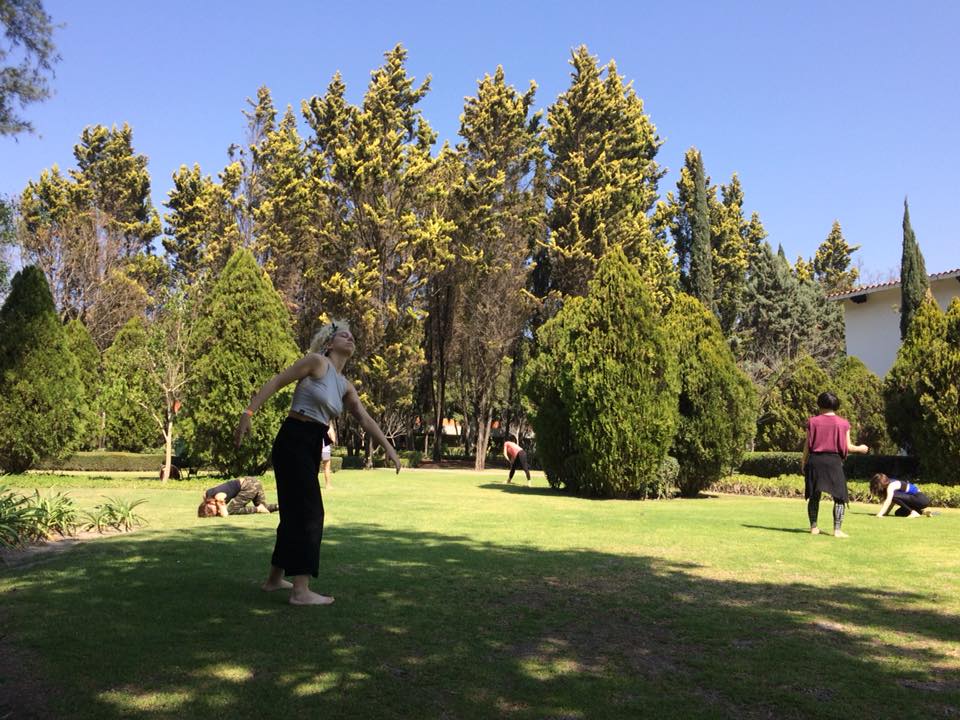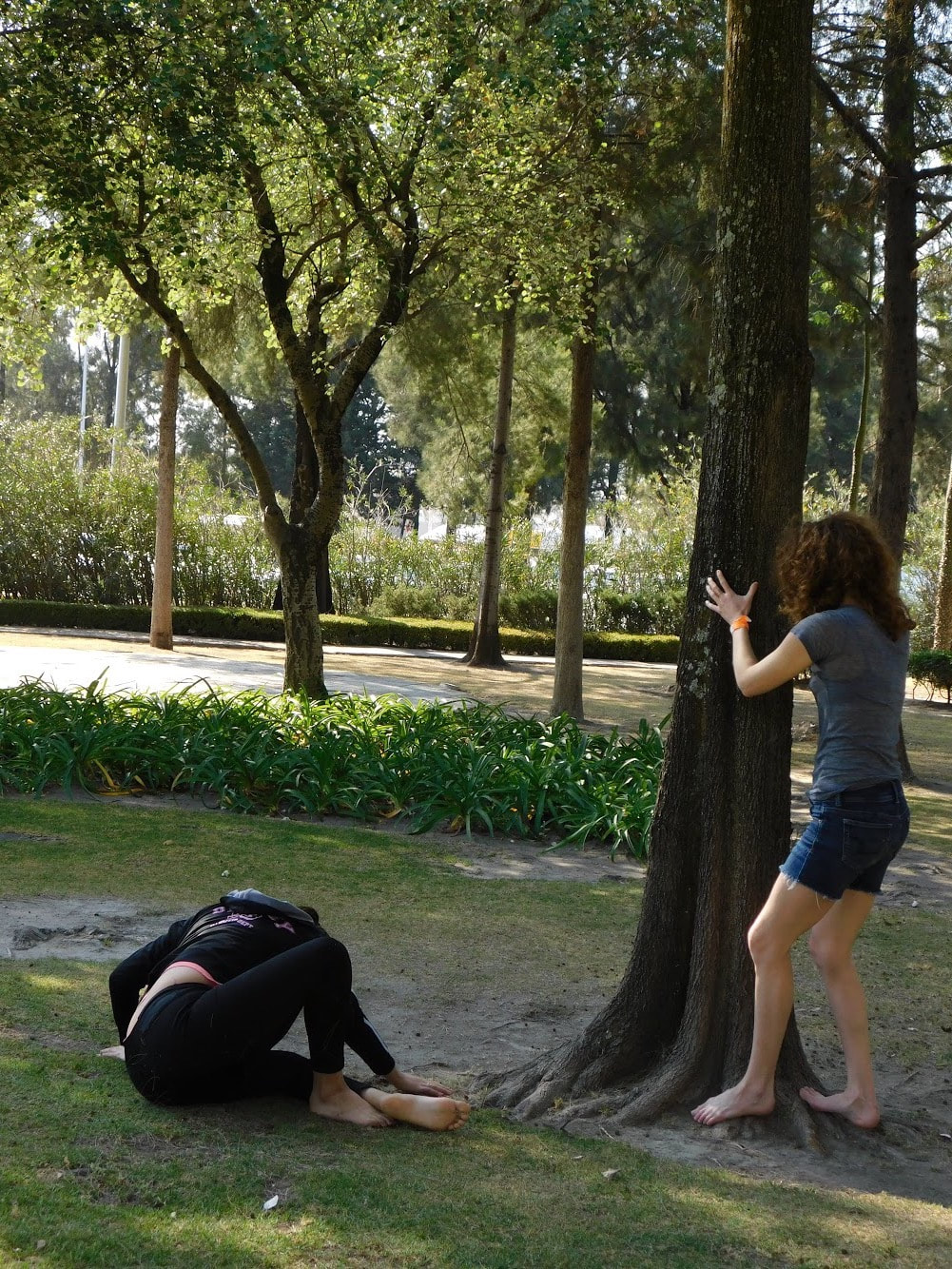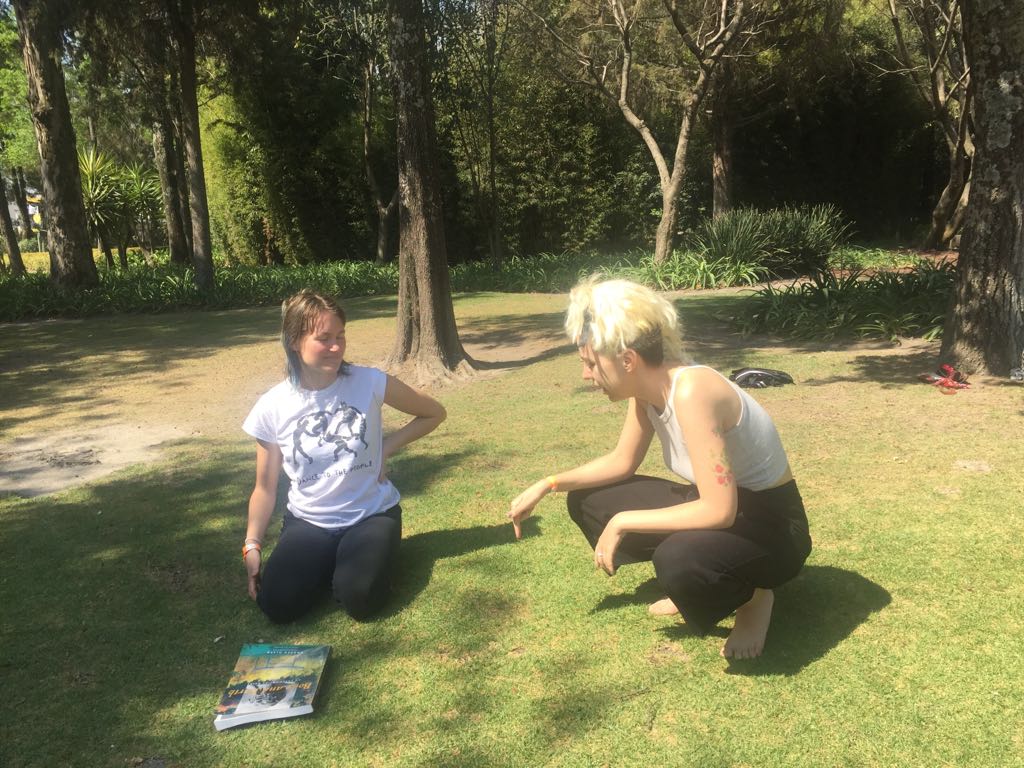|
This is a series from the class I taught at #performatica2018 called MOVEMENT IN NATURE. I teach this class because I want to share a practice I have been cultivating that re-patterns my relationship as human to the Earth 🌏. It was such a joy to teach this in Mexico and I am grateful for the opportunity. By becoming more attuned to the structure and processes of our own bodies, we also have the opportunity to register the balanced wholeness of the world more vividly. Such heightened awareness may move us past abstract concern for "the environment" to a more immediate and physical identification with the earth" This is a quotation from a book titled, BODY AND EARTH, written by Andrea Olsen. I started teaching movement in nature because I saw a need for humans to remember their origins- the human body evolved from the Earth. I'm not sure why I came to teach this. For me, it gives me peace, it connects me to myself, and I feel that is not something I was taught in the civilization that humans created. How did we manage to get so far from our origins? How have we managed to destroy our home? I am here speaking with a student after class. We talked of Authentic movement. We work on finding our authentic movement patterns as we dance with the Earth. Listening and valuing what the body has to tell us, remembering that it is our home and it is part of Earth that is our home
This is a powerful quotation if you are still reading 🤗 "Some students who protest the use of chemical spray on blueberry barrens in Maine, and...fertilizers in grain fields...and pouring raw sewage into streams...do not hesitate to take Ritalin (to stimulate brain chemistry) or Paxil (to slow down) or Motrin or Valium...what goes into the bloodstream enters the tissues, alters the overall balance of the body. Why is interconnectedness important when talking about migration patterns....but not the hormonal secretions of the thyroid gland." BODY AND EARTH by Andrea Olsen .
2 Comments
Reflexions and interviews on Dance to the people's first open class series at baxAn elementary school student might think her teacher lives under her desk to awaken only to teach and to retreat under after the school day terminates. Adults know that teachers lead lives outside of the classroom, though not necessarily separate from teaching. My definition of a teacher is one who began to study because of a strong pull or desire to master a certain area. A teacher knows more than a book or paper can explain and has experienced the lessons she passes on to the students. A teacher has the aptitude to convey knowledge and simultaneously gain knowledge. He is an improviser, a leader, a sage, and a life changer. I am interested in how teachers become a master of their subject and what knowledge they have learned from other teachers, from life experiences, and from mistakes. I interviewed two teachers, Angel Kaba and Melissa Lohman, who both taught for Dance to the People’s (DTTP) Open Class series at Brooklyn Art’s Exchange (BAX) this past fall (another series will start in the Spring). Here’s what they had to say about teaching. "I must have been 9 years old and My body was changing and I remember feeling stiff and awkward. My teacher simply stated out loud that I was struggling, without making me feel bad or good about it. Acknowledging that I was going through a change, but that the disaster was not the end-all, was a crucial lesson for me that I still grapple with today. " Do you have a story of a dance class that you can share or a dance class experience that you remember and think of often?
Angel: One day I was packing my bag in the dance studio and a 5 year old girl came with her mother to ask me to teach her dance classes. I had never worked with someone so young, so I said no. Persistently, the mother asked me to put on music and watch her daughter dance. Her name is Elya and as of today it’s been 11 years that I have taught her. She is one of the best dancers in my company. Melissa: I must have been 9 years old and for some reason my jazz class choreography became a challenge for me. My body was changing and I remember feeling stiff and awkward. My teacher simply stated out loud that I was struggling, without making me feel bad or good about it. Acknowledging that I was going through a change, but that the disaster was not the end-all, was a crucial lesson for me that I still grapple with today. What inspires you to teach? Angel: Life and People. Melissa: I learn things that I want to share with others and I believe that part of the learning process is sharing. How do you think that non-dancers view your profession? Angel: Some people will say that dance is not a real job, just a passion, but I think it’s funny when they say that. Melissa: I think in general non-dancers are in awe of the dance world. It is a kind of mysterious profession that entails a lot of training and dedication in order to make beautiful things with the human body. A general stigma attached to dance and art at large is that it is not a necessity for society and so, the hesitation to view dance as a profession and to be paid fairly for one’s work remains a problem. |


